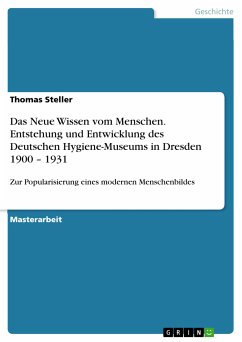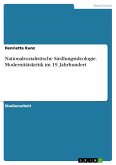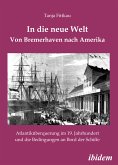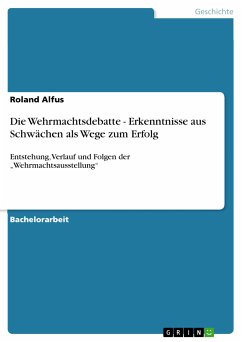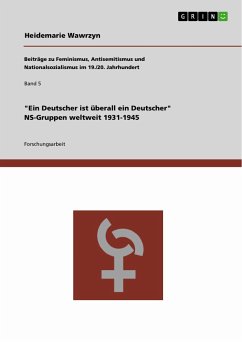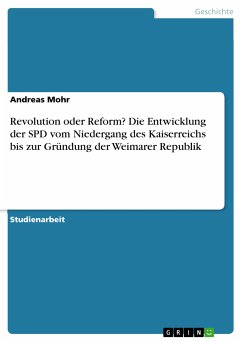Masterarbeit aus dem Jahr 2008 im Fachbereich Geschichte Deutschlands - Erster Weltkrieg, Weimarer Republik, Note: 1,0, Europa-Universität Viadrina Frankfurt (Oder), Sprache: Deutsch, Abstract: This paper is a study of the formation and development of the Deutsches Hygiene-Museum in Dresden. It tells the history of the Museum ranging from 1900 to 1931. Its main objective is to point out essential stages in the development of the institution and identify important persons as well as essential cultural trends which influenced the museum. Furthermore ideas concerning the human as a being which structured the hygienic teachings of the museum and its predecessors are examined. Considering this the methodical approach is a dual one. On the one hand a chronological overview is given and important cultural developments are treated in short digressions. On the other hand relevant original sources are analysed. The genesis of the DHMD is divided into two major periods. In the first phase Karl August Lingner had a strong influence. This was until about 1912. The second phase covers the development of the institution after this time 1931. In the first part of the paper the importance of the Hygiene discourse is discussed, as well as the development of the city of Dresden. Finally the analysis of Lingners social engagements serves as a key towards the understanding of the hygienic developments in Dresden. The institution had developed to be a hybrid ensemble of very different parts ranging from exhibitions, to academy, to the profit-oriented production of educational materials. The museum conveyed its messages by using the most sophisticated methods of communication available in the 1920s. It was the protagonist of a very rational, science-based and body-focussed view of the modern human. Thus it was a reaction to the instability brought by the modern constantly changing industrialised way of living. Five main ideas were identified which structured the hygienic education of the museum. 1. Given the difficult social, political and partly economic time, it is necessary to devise means for a human economy. 2. The human body is seen analogue to a well constructed machine. 3. Furthermore the body can be seen as similar to human society. Thus it is deduced that each individual needs to contribute towards the health of the Volkskörper (folk body). 4. In order to achieve an effective and adequate health care the individual must be hygienically educated because a knowledge deficit exists. The basis must be to inform about human anatomy and physiology. 5. The hygienic education must take into account its recipient and must strive to convey its contents vividly.
Bitte wählen Sie Ihr Anliegen aus.
Rechnungen
Retourenschein anfordern
Bestellstatus
Storno

